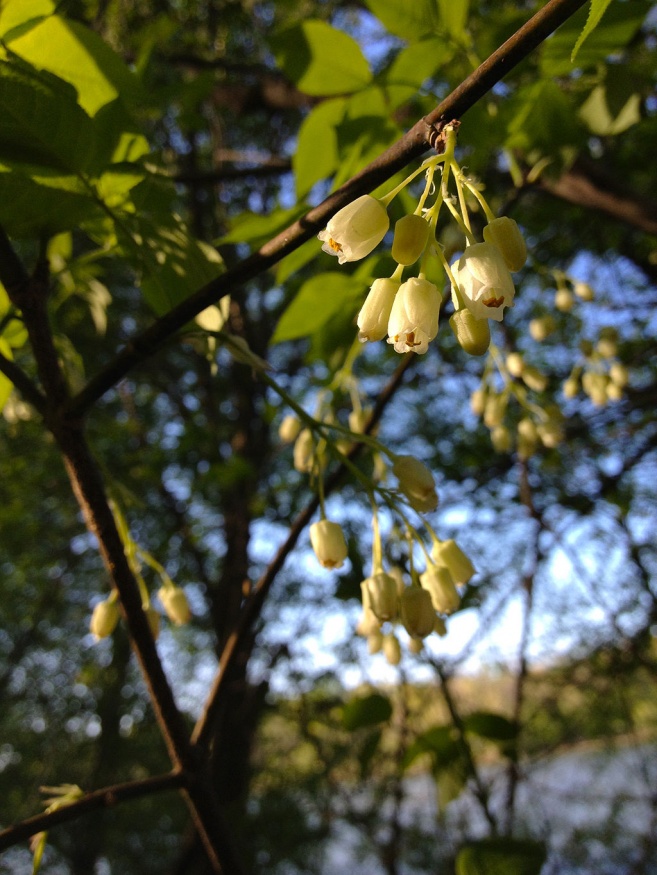American Bladdernut

Other Names: bladdernut, bladder nut
Family: Staphyleaceae Native to: Eastern North America
Hardy to zone: 4
Natural habitat: understory, waters edge, inner forests, hillsides & uplands, floodplains, forest edge
Shapes: multi-stemmed, clump
Height: 10-15ft
width: 10-20ft
Growth rate: medium
Unique attractions: flowers, fruit
Tolerances: pest & desease, black walnut
Common uses: landscaping, naturalized plantings, shade garden
Light: partial shade, full shade
Soil: moist and fertile, well drained, tolerates heavy clay, tolerates wet feet, alkaline ph
American bladdernut is a large understory shrub native to eastern North America. It can be found in undisturbed woodland understory, slopes, and floodplains. Suckering roots and underground runners enable this fast growing, short lived shrub to form colonies, with some stems thick enough to be a small tree. Bladdernut is a good choice for native woodland shade gardens.
Young twigs are green and smooth, gaining tan fissures with age. The trunk bark is brownish gray with white streaks. Leaves are compound with three ovate (trifoliate), finely toothed leaflets; dark green, and paler underneath.
Showy drooping, bell-shaped white flowers appear in early spring (panicles). Bladder like papery seed pods follow and mature in late summer. Their colour starts off green, becomes golden brown, and persists long into the winter. These can add interest to dry flower arrangements.
References
MICHIGAN FLORA ONLINE. A. A. Reznicek, E. G. Voss, & B. S. Walters. February 2011. University of Michigan. Web. November 13, 2020. https://michiganflora.net/species.aspx?id=2717
Missouri Botanical Garden. (n.d.). Staphylea trifolia. Retrieved from https://www.missouribotanicalgarden.org/PlantFinder/PlantFinderDetails.aspx?taxonid=287254&isprofile=0&basic=staphylea
The Morton Arboretum. (n.d.). American bladdernut. Retrieved from https://www.mortonarb.org/trees-plants/tree-plant-descriptions/american-bladdernut
NC State University. (n.d.). Staphylea trifolia. Retrieved from https://plants.ces.ncsu.edu/plants/staphylea-trifolia/